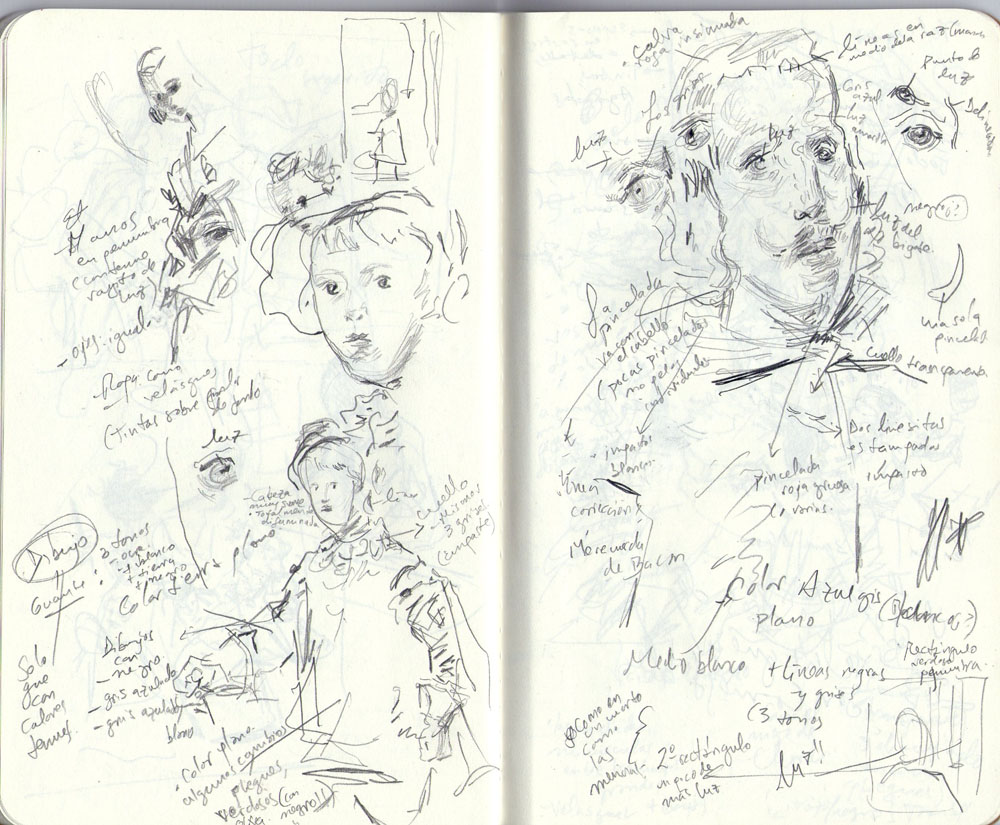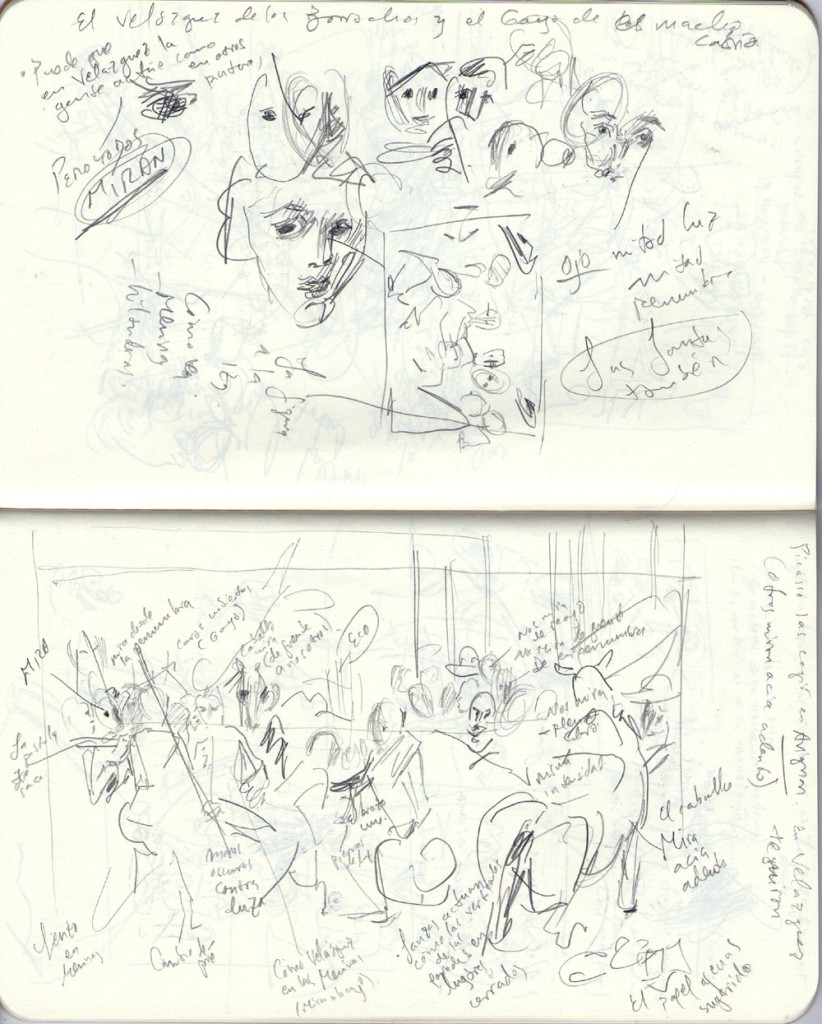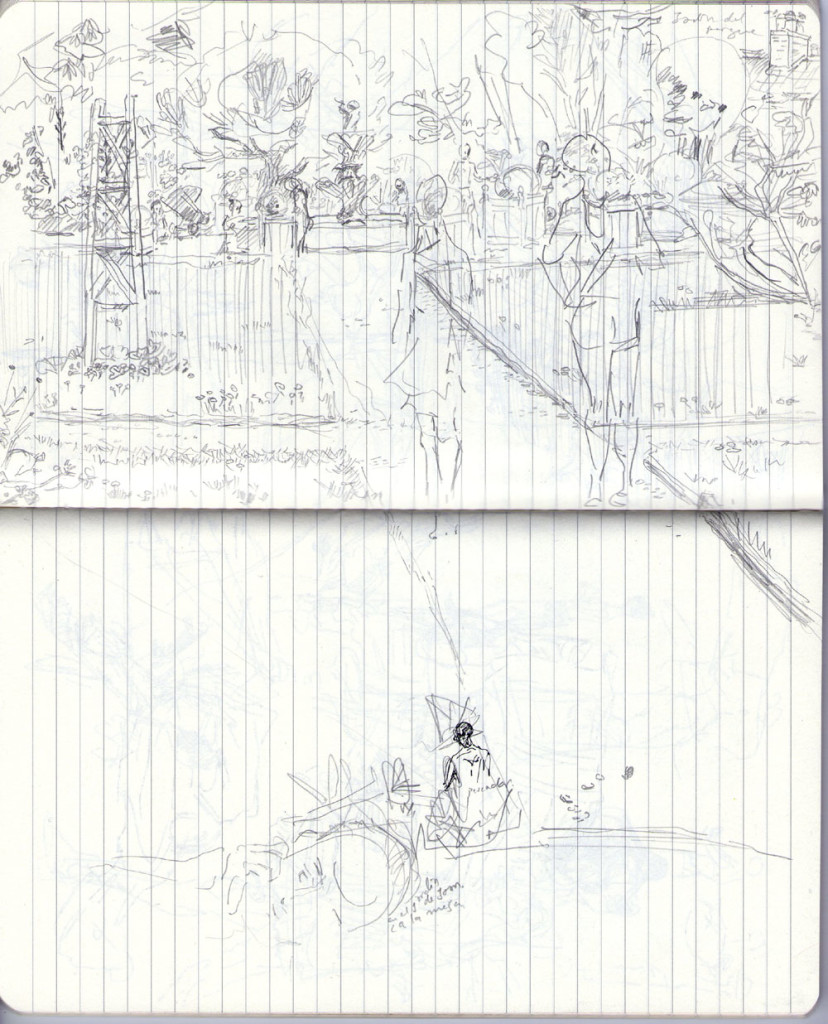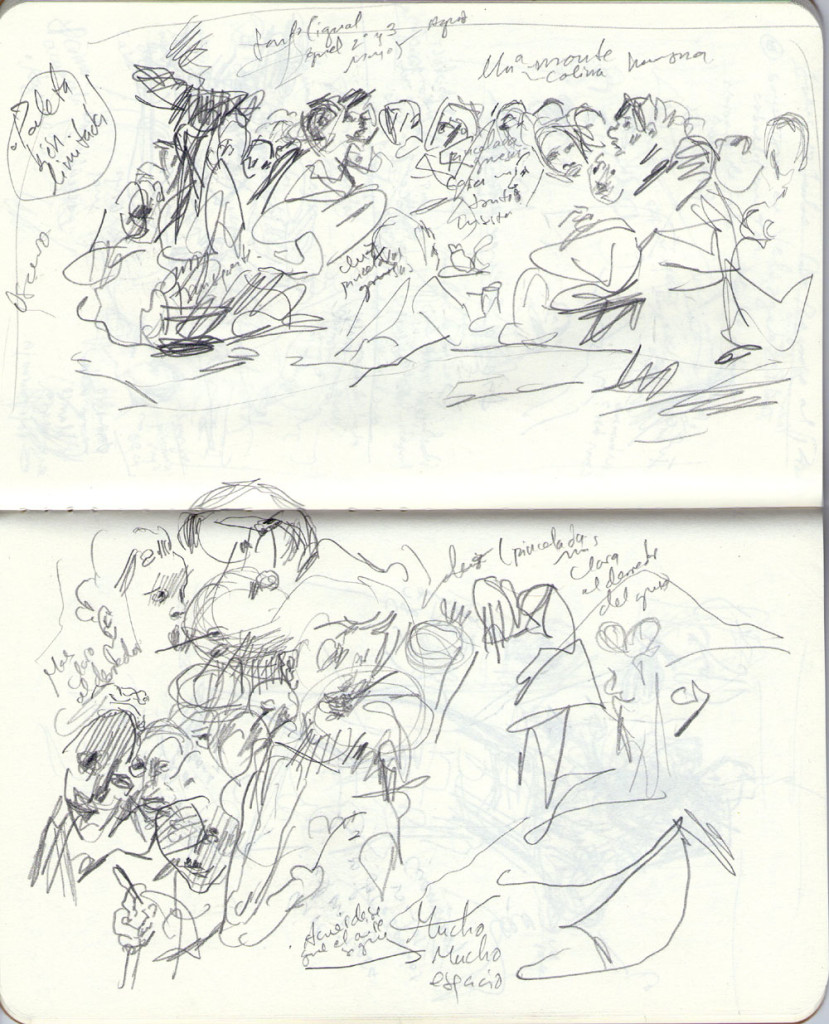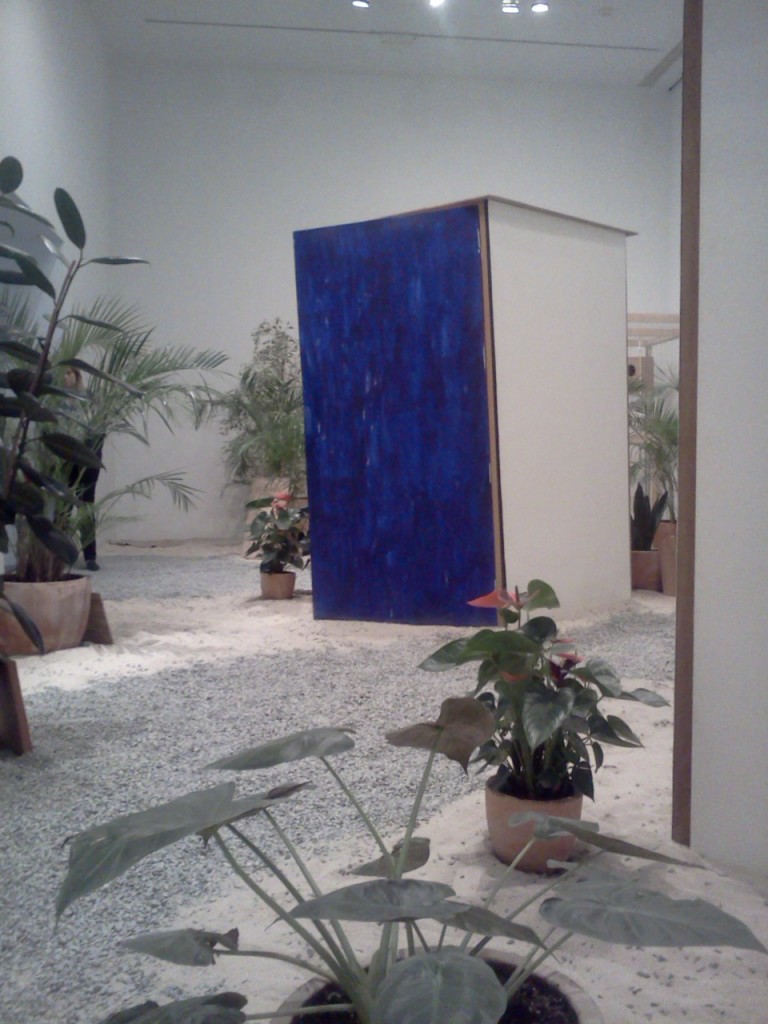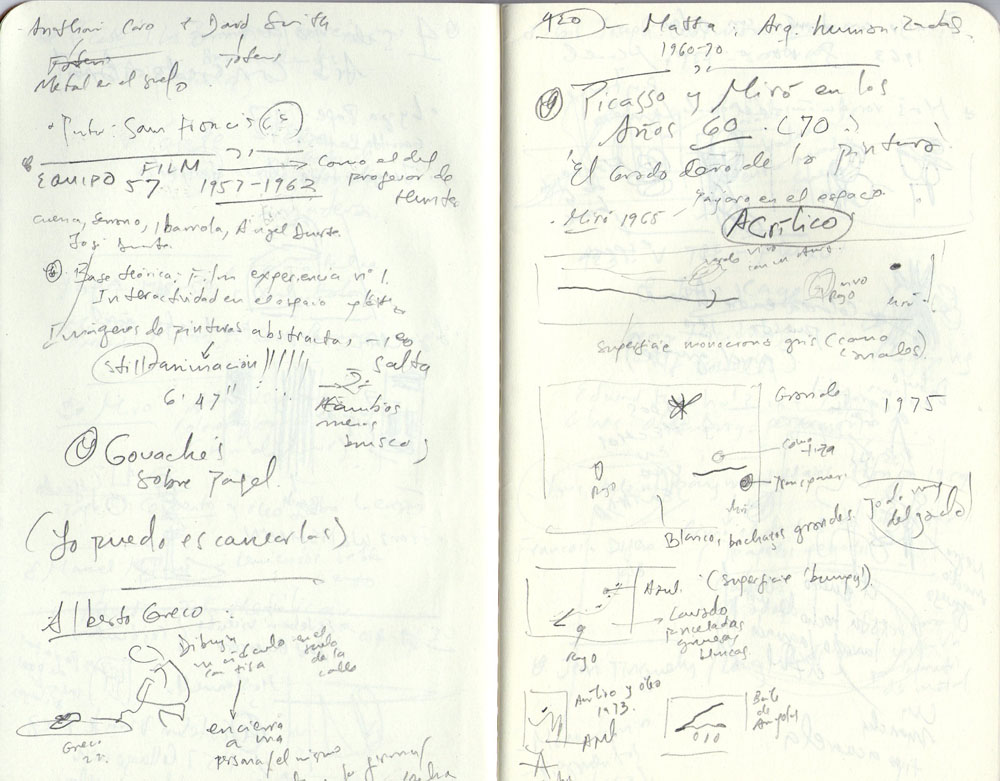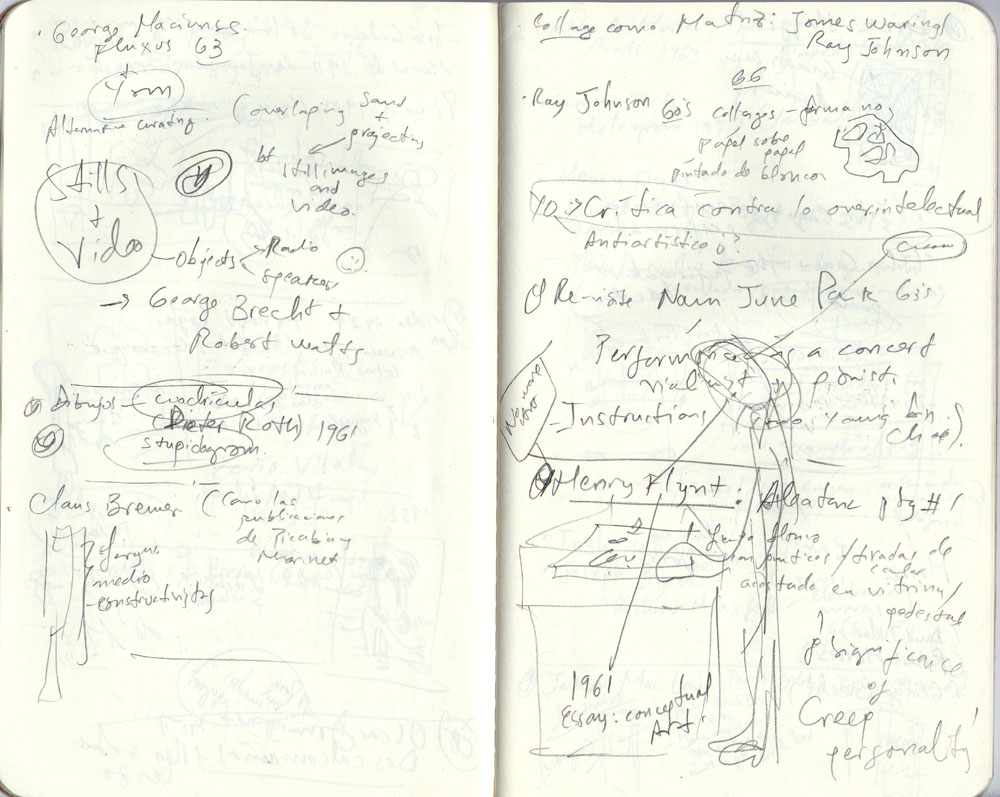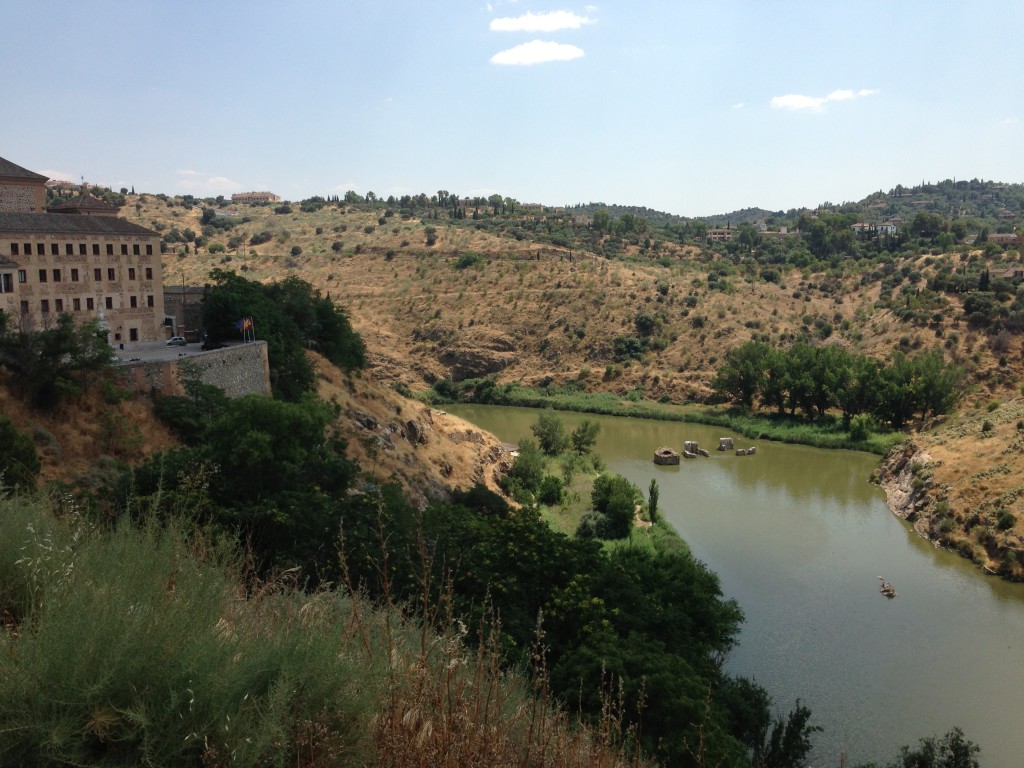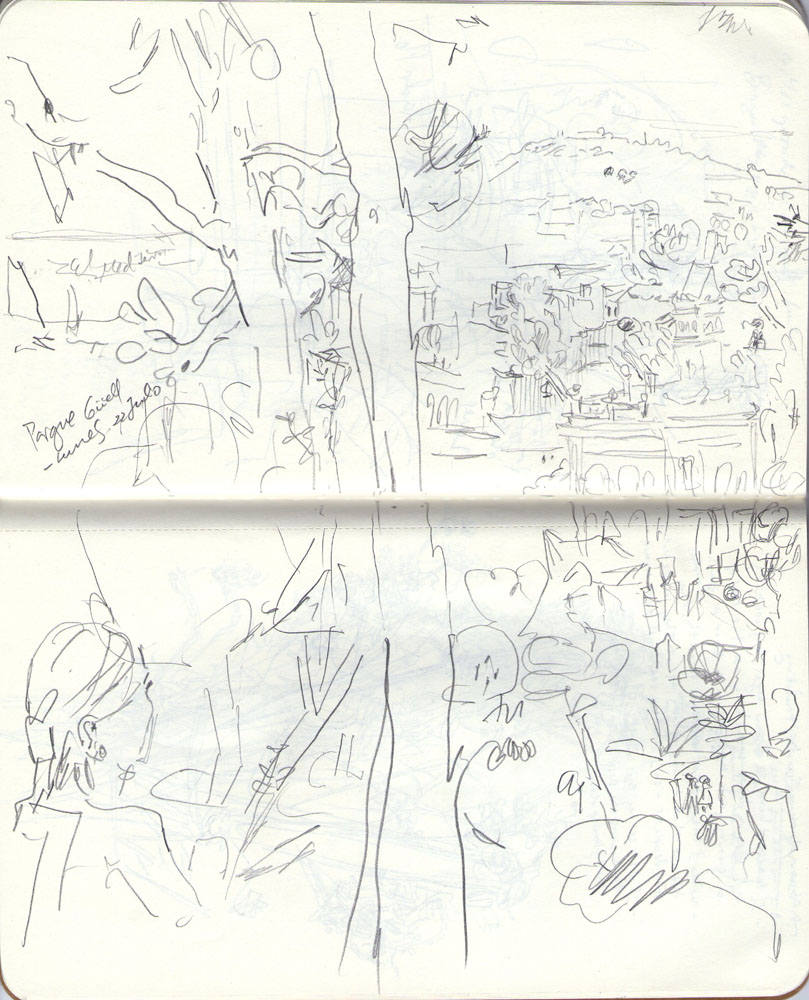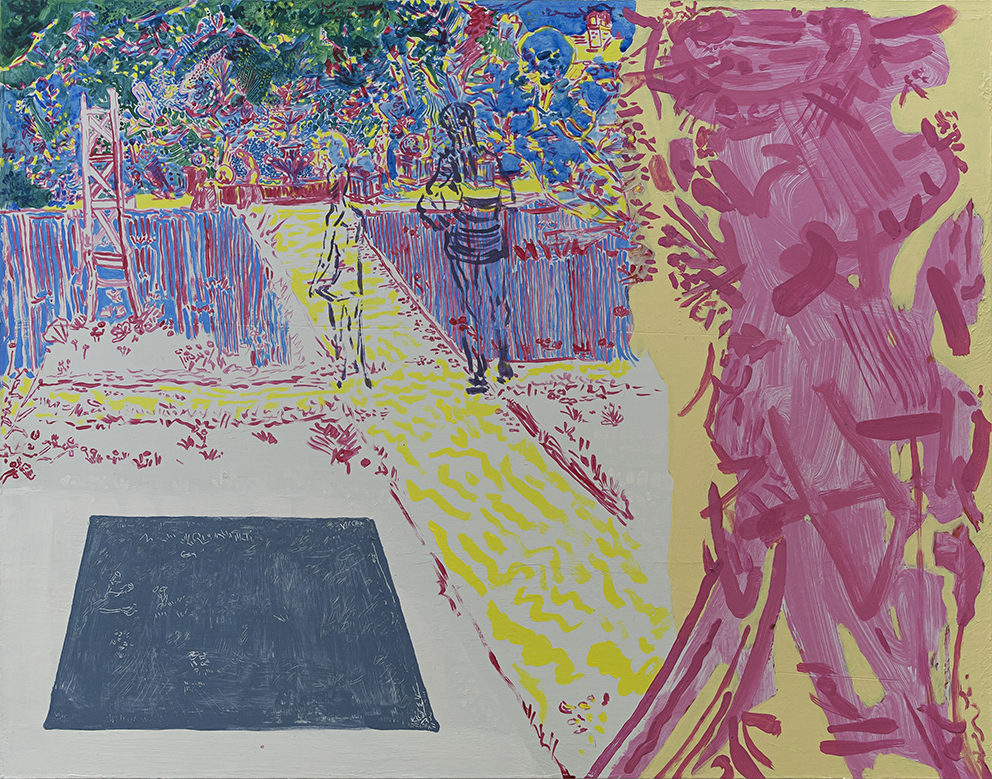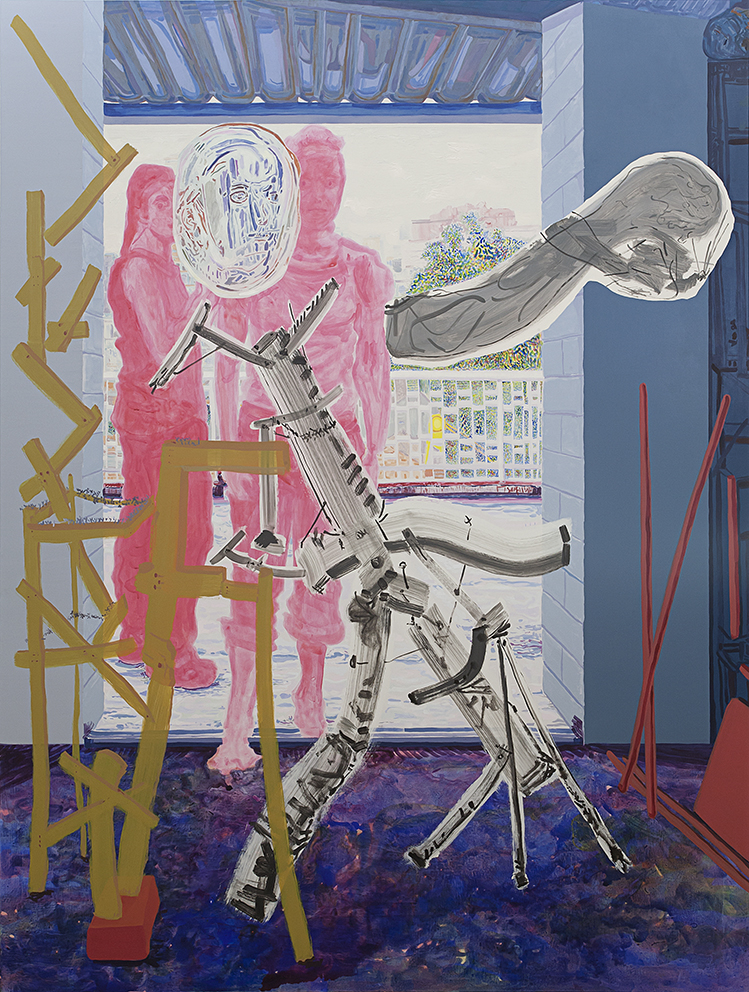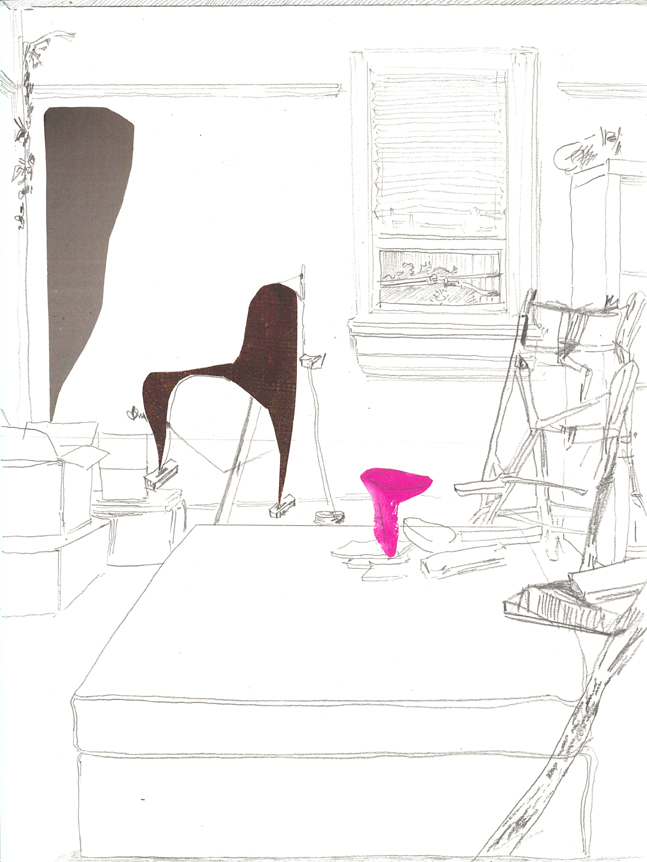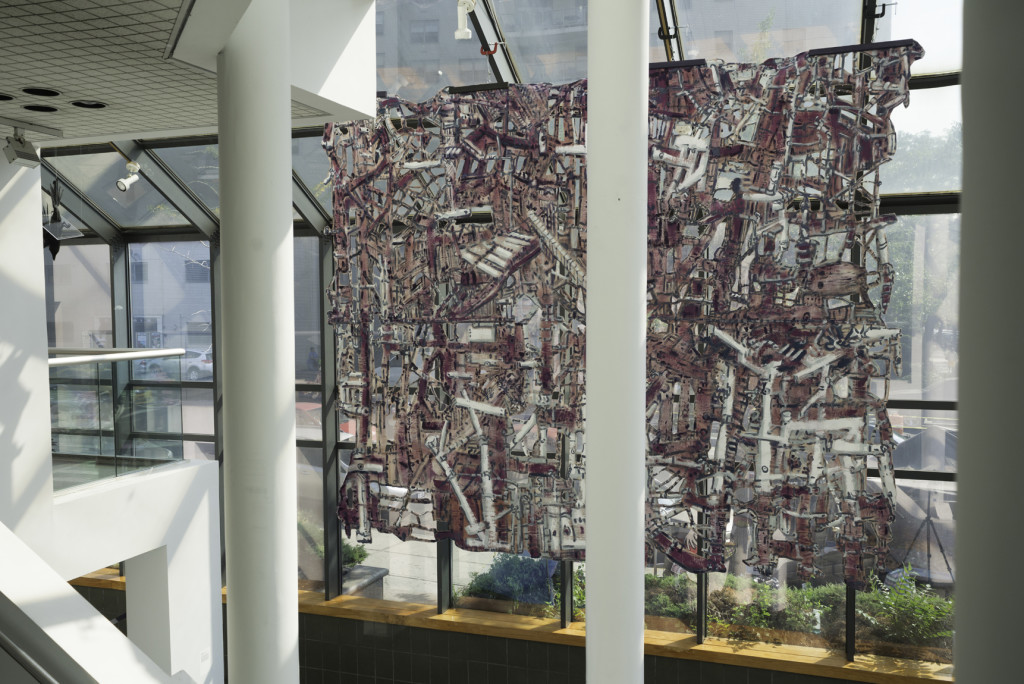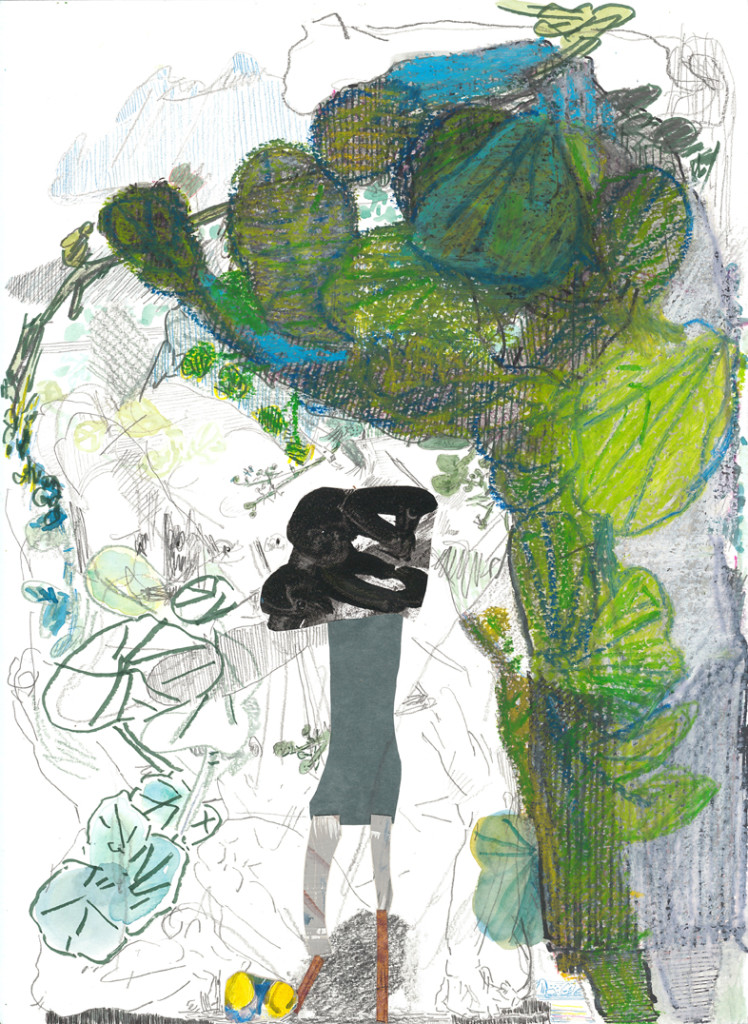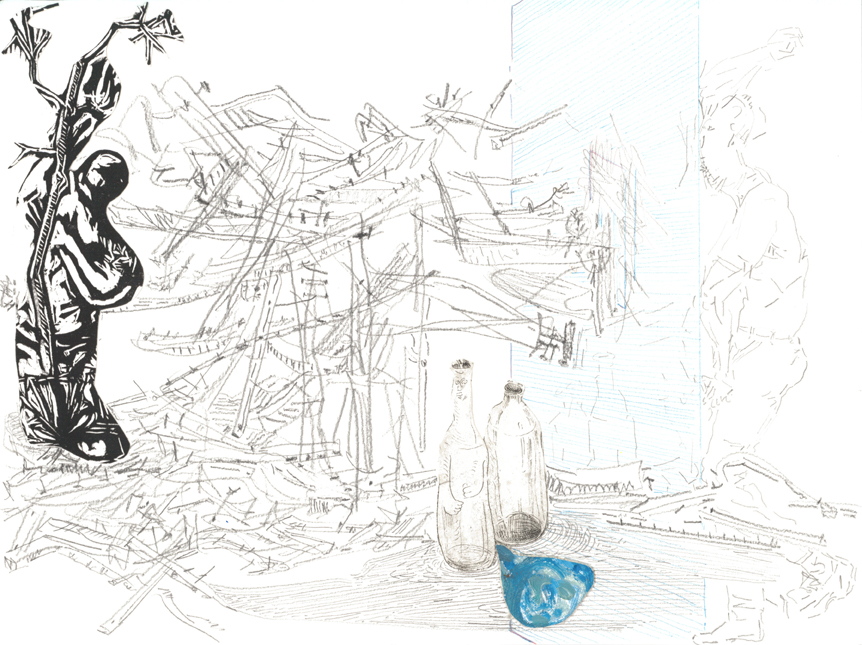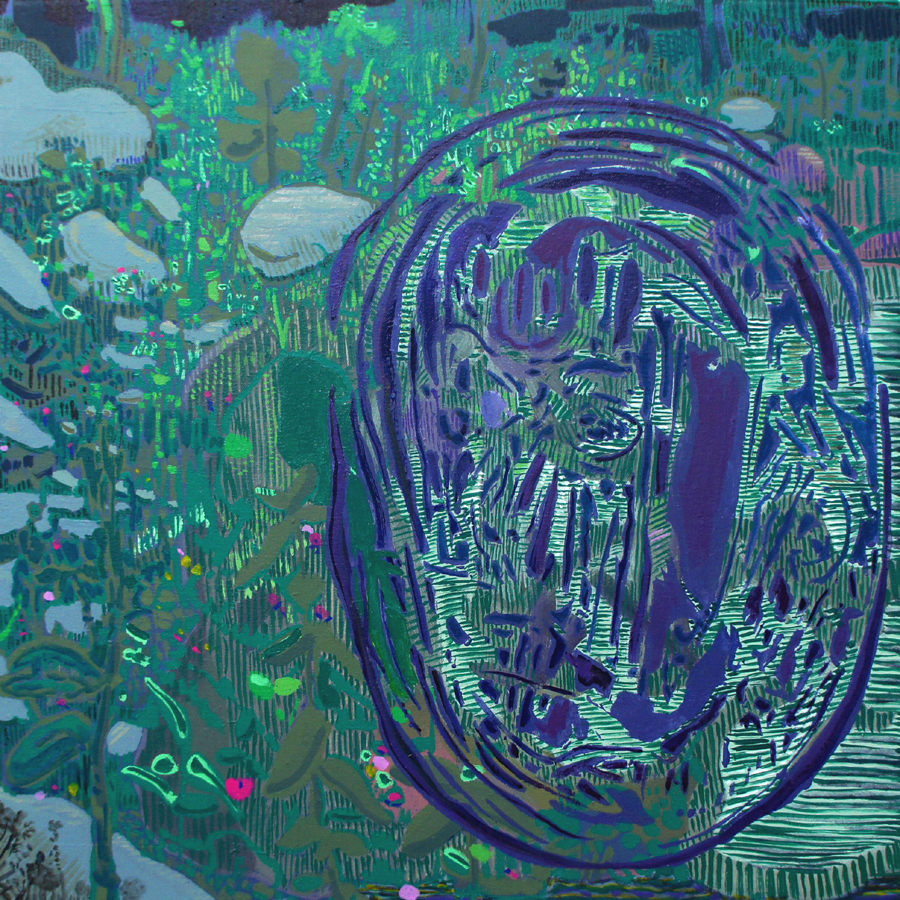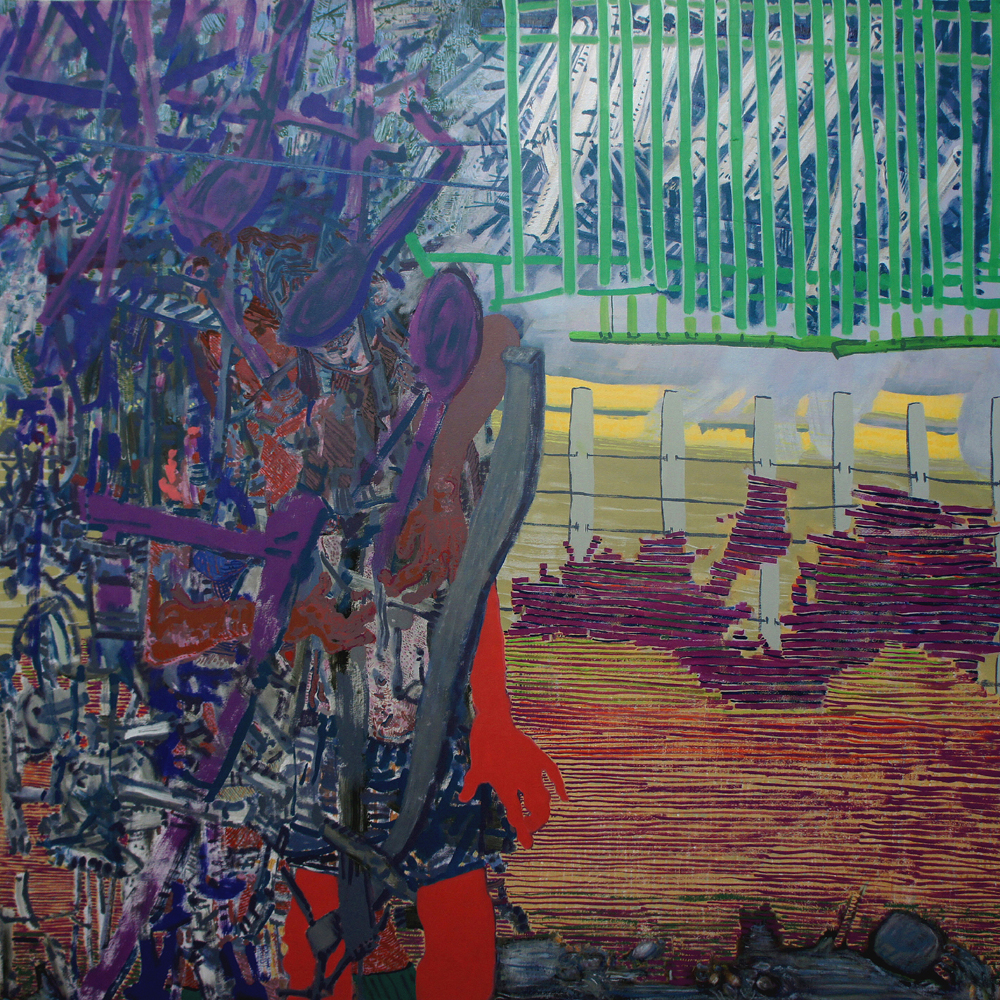Daniel Mantilla
Grant awarded Spring 2013
Website:
http://danielmantilla.com/home.html
My original plan was to travel to Madrid and Barcelona to conduct a focused study of the collections at the Prado Museum, the Reina Sofia in Madrid, and the Picasso Museum in Barcelona. I had specific exhibitions, artists, and works in mind that I believed would enrich specific developments in my own practice. To make the most of my trip, I took notes and made drawings of my observations in several notebooks. I also encountered great surprises inside and outside these museums such as a visit to Toledo, and parks and gardens such as El Buen Retiro and Park Güell. The trip had a great impact on the way I approach art making as evidenced in my presentation for thesis and the work I have done since then.
Comments I read in 2007 by Ortega y Gasset have triggered several ideas for figures in my own work. He observes that Velazquez’ figures and depictions often seem as fleeting apparitions and immaterial. I made several sketches of the portraits by Velazquez and his paintings The surrender of Breda, The Spinners, and Las Meninas. One of the purposes to study these paintings was to learn from direct observation how Velazquez gives a sense of depth or mystery to apparently clear mundane moments. From my observations, I started to pursue a way to paint air, or the sensation of an atmosphere, by developing and using a set of idioms from lineal or graphic resources associated with drawing and printing techniques. I also aim to bring a sense of uneasiness under apparent normalcy to my own work.
I was looking for several things in Goya. I consider ideas about painting as decoration, how they operate in the history of painting, and I try to see how they could function in my work. At the time, I was making predominantly black squared paintings with these considerations in mind. I have continued making paintings of the same size in square format, but instead of using oils and predominantly black, I started to use acrylic paint with greens, blues, and violets as the dominant colors. I looked at Goya’s compositions for tapestries to learn how he is able to charge his decorative compositions with elements that go farther than apparent pleasant scenes. I have also been curious about how his paintings for tapestries relate to his later-private decorative project- known as the black paintings. I took several notes about these concerns which I continuously revise. After the trip, I also started to read more and to look into ideas of decoration by Gauguin and the Nabis and later extrapolations of these ideas through variations of symbolism and conceptual art. I am working on developing in some of my work a kind of painting that deals with serious or often dark issues under apparent playfulness.
At the Museum Reina Sofia, I studied Guernica and the paintings by Picasso and Miró from the sixties. I also took advantage of the museum’s interest in Latin American art, particularly the Brazilian ideas and art that I was researching at the time. Before going to Spain I had been looking into the concept of Antropofagia or Cannibalism as it appeared in Brazil during the 1920’s. Since then, this concept has been used by artists from Brazil as a symbolic configuration for the assimilation of foreign ideas into a Brazilian context. I presented a visual project based on the initial results of my research to my Latin American Art class at Hunter in 2013. I continued my research on the subject by looking at how the concept of cannibalism carries through the work of artists presented at the museum Reina Sofía’s permanent exhibition of Concrete and Neoconcrete art from Brazil, Hélio Oiticica’s installation “Tropicália” from 1967,
and the exhibition “Concrete Invention: Colección Patricia Phelps de Cisneros” that was in view until September, 2013.
Two exhibitions that have been helpful on my installation of paper and canvas cut-outs were the retrospective of Cildo Meireles at the Palacio de Velázquez, Parque del Retiro, and the installation Imaginary Memories by Mitsuo Miura at the Palacio de Cristal, Parque del Retiro.
The main reason I went to Toledo was to see the painting The Burial of the Count of Orgaz by El Greco – I am assimilating his use of grays, blacks and yellows in my work. I also found the city and its landscape stimulating.
In Barcelona I visited the Museum Picasso with particular interest on his series of variations of Las Meninas to better assimilate Picasso’s thought process and deep observation through his analysis of Velazquez’ work. The architecture in Barcelona and the city itself were another source of enthusiasm – like seeing the Mediterranean Sea for the first time, and drawing at the Park Güell. I used one of my sketches of gardens for a painting for thesis (Garden Path) and I recently made a large painting in square format which is loosely base on the way I remembered a canvas by Frans Hals entitled Family Group in a Landscape from the Thyssen Museum.
I am thankful for having received the Kossak travel grant. It was a central part of my experience at Hunter and an invaluable tool in my growth as an artist. I hope many more artists who go to Hunter will have the opportunity to have access to this great resource.

